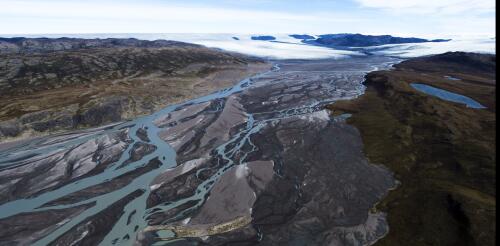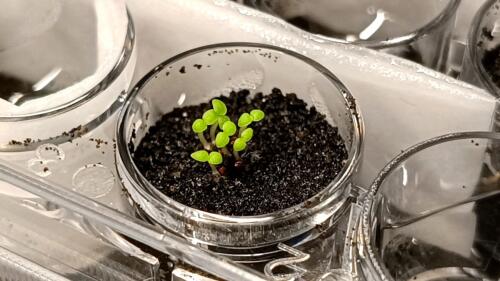Science
About 400,000 years ago, large parts of Greenland were ice-free. Scrubby tundra basked in the Sun’s rays on the island’s northwest highlands. Evidence suggests that a forest of spruce trees, buzzing with insects, covered the southern part of Greenland. Global sea level was much higher then, between 20 and 40 feet above today’s levels. Around the world, land that today is home to hundreds of millions of people was under water. Scientists have known for awhile that the Greenland ice sheet had mostly disappeared at some point in the past million years, but not precisely when. In a new study in the journal Science, we determined the date, using frozen soil extracted during the Cold War from beneath a nearly mile-thick section of the Greenland ice sheet. A brief look at the evidence beneath Greenland’s ice sheet and the lessons its holds. The timing – about 416,000 years ago, with largely ice-free conditions last...
In November of 2020, a freak wave came out of the blue, lifting a lonesome buoy off the coast of British Columbia 17.6 meters high (58 feet). The four-story wall of water was finally confirmed in February 2022 as the most extreme rogue wave ever recorded at the time. Such an exceptional event is thought to occur only once every 1,300 years. And unless the buoy had been taken for a ride, we might never have known it even happened. For centuries, rogue waves were considered nothing but nautical folklore. It wasn’t until 1995 that myth became fact. On the first day of the new year, a nearly 26-meter-high wave (85 feet) suddenly struck an oil-drilling platform roughly 160 kilometers (100 miles) off the coast of Norway. At the time, the so-called Draupner wave defied all previous models scientists had put together. Since then, dozens more rogue waves have been recorded (some even in lakes), and while the one that surfaced near Ucluele...
Open Access Government takes a closer look at the hydrology and surficial geology in Alaska to illustrate the broader picture of geology in the region, primarily focusing on Permafrost and Periglacial Studies From reporting on oil and mineral finds to helping in the aftermath of deadly mudslides, the Division of Geological & Geophysical Surveys (DGGS) in Alaska staff tirelessly put effort into growing the economy and safeguarding their communities. Investing in geology is essential for commercializing and discovering Alaska’s untapped gas, oil, coal, and mineral resources and preventing geologic risks to Alaskans. Under the banner of the Director’s Office, the DGGS consists of five sections: the Geologic Materials Center and the Alaska Geospatial Office. The Director’s Office oversees strategic planning for the Division’s programs to ensure DGGS serves the community’s needs, oversees the Division’s financi...
FARGO — Students say a pledge from North Dakota State University to allow them to complete their studies in a discontinued program is falling far short of expectations. In addition, they and faculty question cuts to the science program to begin with, saying the move is shortsighted and goes against the standards of a land grant institution. Shelby Tooz, 20, of Moorhead, declared geology her major just days before talk emerged of the program being in danger, and she spent the following weeks and months in limbo. “I felt very kind of betrayed by a university that I grew up liking. Now when I think of NDSU I just think… They’ll take what you like and rub it in the dirt,” Tooz said. She’s since transferred to a geology program at the University of Minnesota Duluth. NDSU President David Cook and then-interim Provost David Bertolini warned of likely budget cuts last fall, and in January of this year outlined st...
If humans are to establish long-term bases on the moon, they will need food resources. In recent years, scientists have been taking steps toward making moon agriculture possible. Researchers in China said this month that they have found a way to turn soil, that is similar to lunar soil, fertile. They found that introducing special bacteria into the soil can increase the amount of phosphorus, an important nutrient for plants. The Chinese scientists grew a plant that it is related to the tobacco plant in a laboratory in China. They used volcanic soil from the Changbai Mountains in Jilin province that is similar to moon soil, which scientists call lunar regolith. They treated the moon-like soil with three different kinds of bacteria. The researchers found that the plants raised in the bacteria-treated soil grew better than plants that grew in moon-like soil without the bacteria. The researchers said the bacteria made the soil more acidic. This permitted ph...




